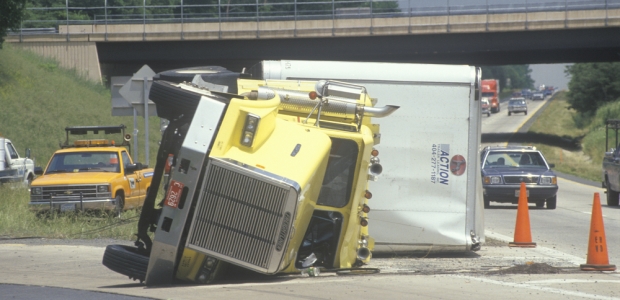
FMCSA Launches Study of High-Risk Truck and Bus Companies
The study will assess how well the Behavioral Analysis and Safety Improvement Category (BASIC) safety measures used by the Compliance, Safety, Accountability Safety Management System identify high-risk carriers and predict future crash risk, crash severity, or other safety indicators for motor carriers, including the highest-risk carriers.
The Federal Motor Carrier Safety Administration has commissioned the National Academies of Sciences, Engineering, and Medicine, through its Committee on National Statistics and Transportation Research Board, to perform a study of high-risk truck and bus companies. This study will assess how well the Behavioral Analysis and Safety Improvement Category (BASIC) safety measures used by the Compliance, Safety, Accountability Safety Management System identify high-risk carriers and predict future crash risk, crash severity, or other safety indicators for motor carriers, including the highest-risk carriers.
FMCSA is undertaking this at the direction of Section 5221 of the Fixing America's Surface Transportation Act (FAST Act) of 2015.
A panel of experts will examine the methodology used to calculate BASIC percentiles and identify carriers for enforcement, including the weights assigned to particular violations, and the link between crash risk and specific regulatory violations. Also under study are:
- The relative value of inspection information and roadside enforcement data
- Any data collection gaps or data sufficiency problems that may exist and the impact of those gaps and problems on the efficacy of the CSA program
- The accuracy of safety data, including the use of data from crashes in which a motor carrier was not at fault
- Whether BASIC percentiles for motor carriers of passengers should be calculated separately than for freight motor carriers
- The differences in the rates at which safety violations are reported to FMCSA for inclusion in the safety management system by various enforcement authorities, including states, territories, and federal inspectors
- How members of the public use the system and what effect making its information public has had on reducing crashes and eliminating unsafe motor carriers from the industry
The panel will issue a report with findings and recommendations at the end of the study; the study committee for the project will be posted for public comment within two months at http://www8.nationalacademies.org/cp/.
The project is a collaboration between the Committee on National Statistics of the Division on Behavioral and Social Sciences and Education and the Transportation Research Board.